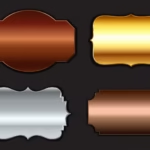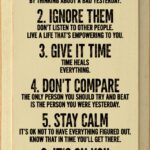Fashion designing is the art of creating clothing and accessories by blending aesthetics, functionality, and creativity. It’s a multidisciplinary field where designers conceptualize, sketch, and bring to life garments that reflect trends, personal styles, cultural influences, and innovations. Fashion designers work with various materials, patterns, and techniques to create unique pieces.
Here are some key aspects of fashion designing:
1. Design Process:
- Research and Inspiration: Fashion designers begin by researching trends, cultures, art, and history to gather inspiration for their collections.
- Concept and Sketches: Designers then move to sketching, creating rough designs and silhouettes that align with their vision.
- Fabric Selection: Choosing the right fabric is crucial, as it affects the fit, feel, and durability of the garment.
- Pattern Making: Creating patterns based on sketches to ensure the garment fits correctly when made.
- Sewing and Tailoring: The garment is constructed using the chosen fabrics and patterns, ensuring quality and precision.
2. Types of Fashion Designing:
- Haute Couture: Custom-made, high-end fashion for exclusive clientele. These garments are intricate and often one-of-a-kind.
- Ready-to-Wear (Prêt-à-Porter): Collections designed for mass production, yet still high-quality and fashion-forward.
- Casual Wear: Comfortable and stylish clothing designed for everyday wear.
- Sportswear: Functional clothing designed for physical activity but with a fashionable touch.
- Evening Wear: Formal clothing like dresses and suits, designed for special occasions.
- Accessories Design: Creating accessories such as handbags, shoes, jewelry, and hats.
3. Skills Required for Fashion designing:
- Creativity: The ability to think outside the box and bring new ideas into the world of fashion.
- Technical Skills: Knowledge of garment construction, sewing, pattern making, and fabric manipulation.
- Fashion Illustration: Ability to sketch designs and ideas clearly.
- Textile Knowledge: Understanding different fabrics and their properties.
- Trend Awareness: Keeping up-to-date with global fashion trends and consumer preferences.
- Business Acumen: Marketing, branding, and financial management are also essential for a successful career in fashion.
4. Tools of the Trade:
- Sketchbook & Pencils: For initial designs and concepts.
- Digital Software: Programs like Adobe Illustrator and Photoshop are often used to refine designs and create technical drawings.
- Sewing Machines and Tools: Basic sewing machines, along with tools like scissors, measuring tapes, and needles, are essential for garment production.
5. Fashion Shows and Marketing:
- Fashion shows are important platforms where designers showcase their latest collections, often influencing global trends.
- Marketing and branding help in building a designer’s or brand’s identity and engaging with potential customers.
Career Pathways in Fashion Designing:
- Fashion Designer: The primary role involves creating clothing and accessories.
- Pattern Maker: Focuses on creating the blueprints or patterns for garments.
- Fashion Illustrator: Specializes in sketching and illustrating fashion designs.
- Textile Designer: Works with the design and development of fabrics and textiles.
- Fashion Stylist: Helps in selecting clothing for photoshoots, events, or personal styling.
- Fashion Merchandiser: Works in retail or as part of a design team to ensure the commercial success of fashion collections.
Would you like to explore any particular aspect of fashion design, or perhaps need guidance on starting a career or designing a collection?











